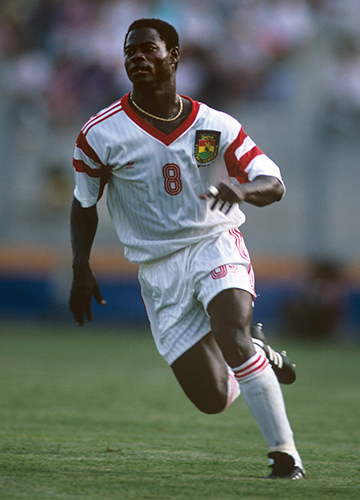Football wunderkinds have to overcome many hurdles to realise their full potential. Some fall by the wayside, unable to cope. The reasons for underachieving include injuries, bad luck, indiscipline, not being developed properly, being rushed to the senior level and being with people who do not have their best interests at heart. They now serve as cautionary tales for a new generation of prospects.
The 1990s saw Ghanian Nii Lamptey, whom Pelé had called his successor, burn out in his early 20s. He won the golden ball when Ghana became the U-17 world champions in 1991. Lamptey was a regular in the senior national team and at club-level by the age of 17. But, the attacking midfielder, who was illiterate, put too much trust in his Italian agent, Antonio Caliendo, who was more interested in higher commissions than choosing the best move for his client.
This meant that Lamptey moved to Aston Villa in England after one season at Dutch club PSV Eindhoven instead of continuing his development alongside newly arrived fellow teenage sensation Ronaldo. From 1994 till his retirement in 2008, he moved to 10 countries in four continents, never settling anywhere. For Ghana, he played 38 games by the age of 21, but was never selected after that. A combination of mismanagement, injury and personal tragedy (he lost two children to a rare lung disease) never gave Lamptey the opportunity to bounce back.
Also read
- World Cup qualifiers: THIS teenager will replace injured Neymar in Brazil-Argentina clash
- IN PICS | Endrick of Real Madrid is married at 18! Brazil wonderkid shares wedding pics with wife Gabriely Mirandy on Instagram
- Copa America 2024: Brazilian teenager Endrick gets No. 9 shirt
- What about Mbappe? Luka Modric told Endrick the Brazilian could inherit Real Madrid's no 9 shirt
- Endrick announces his arrival at Wembley; scores his first goal for Brazilian national team
- Calm before storm: Endrick Felipe savours quiet Christmas at home in Brasilia
On the other hand, Freddy Adu got plenty of chances. Also Ghana-born, but raised in the US, Adu made his debut in Major League Soccer―the top division―aged 14. He was linked with multiple big clubs, labelled the next Pele and the saviour of “soccer”. The talented attacking midfielder was over-hyped and underdeveloped and today, at 33, Adu is the perfect example of a wunderkind who did not live up to potential.
Another memorable prospect who did not make it at the senior level is Brazil's Kerlon―the only effective user, if not the inventor, of the seal dribble (bouncing the ball on the head and getting past opponents). The 34-year-old last played in 2017 in Slovakia.
The “next Messi” Bojan Krkić, hopped from Spain (Barcelona) to Japan, via Italy, the Netherlands, England, Germany and Canada. Now, at 32, the Spaniard insists he is happy in Japan, but has, in the past, spoken about how the pressure of the Messi tag pulled him down. In his own words: “If you compare me with Messi... what career did you expect?”


